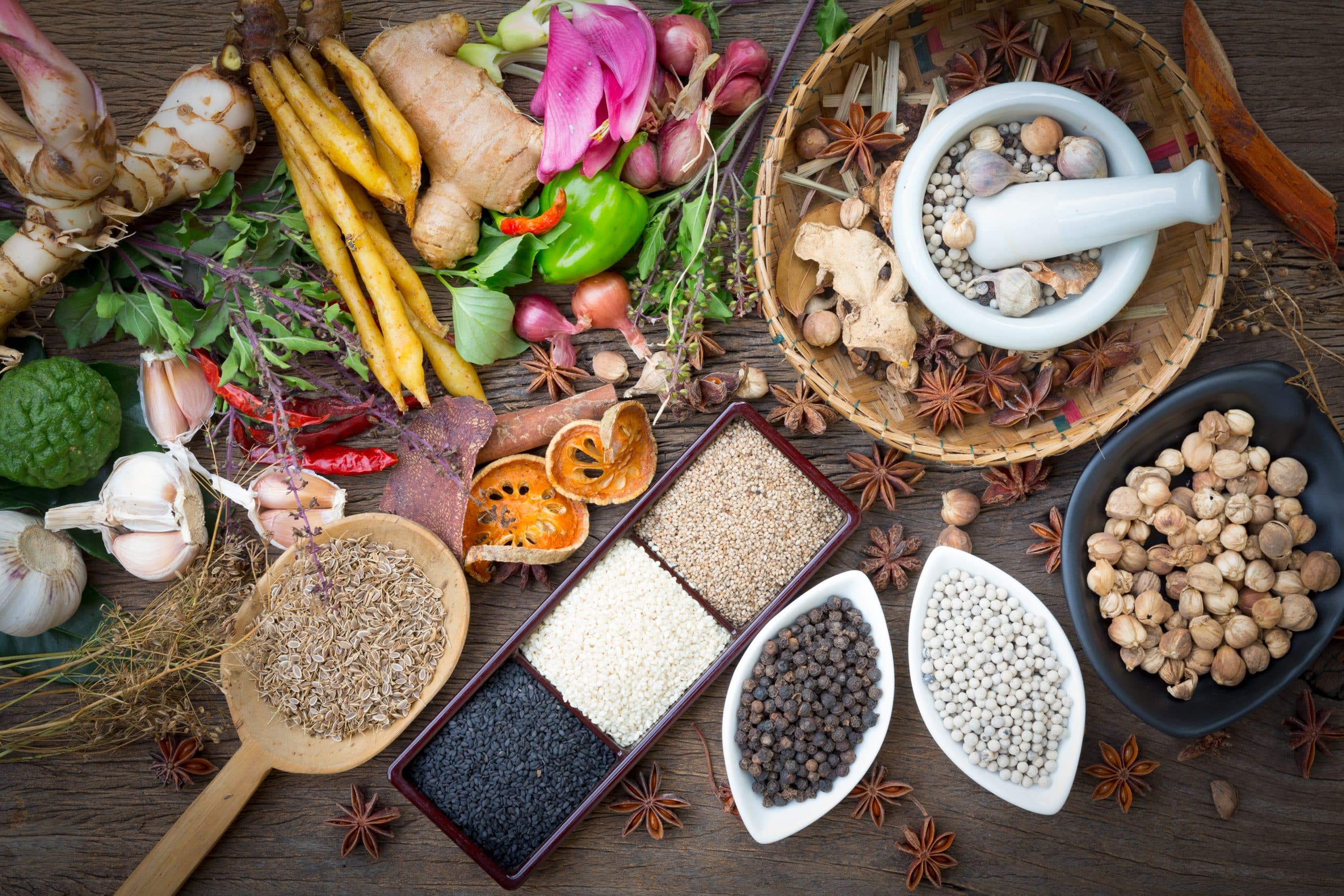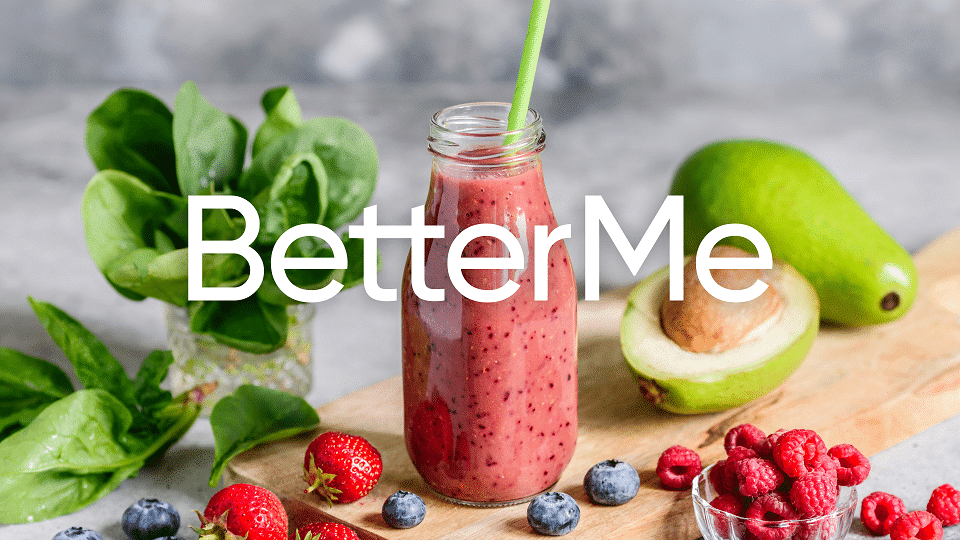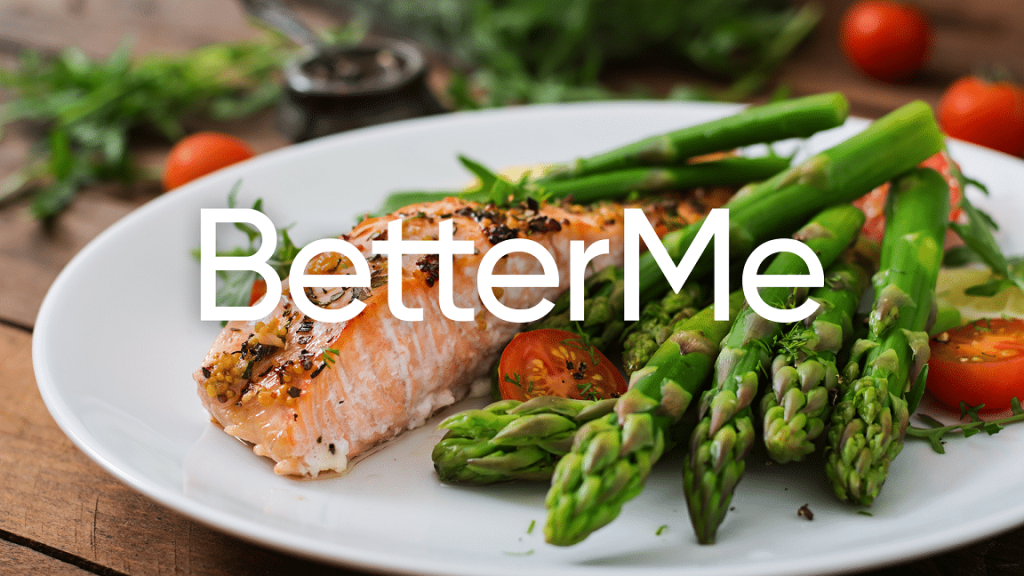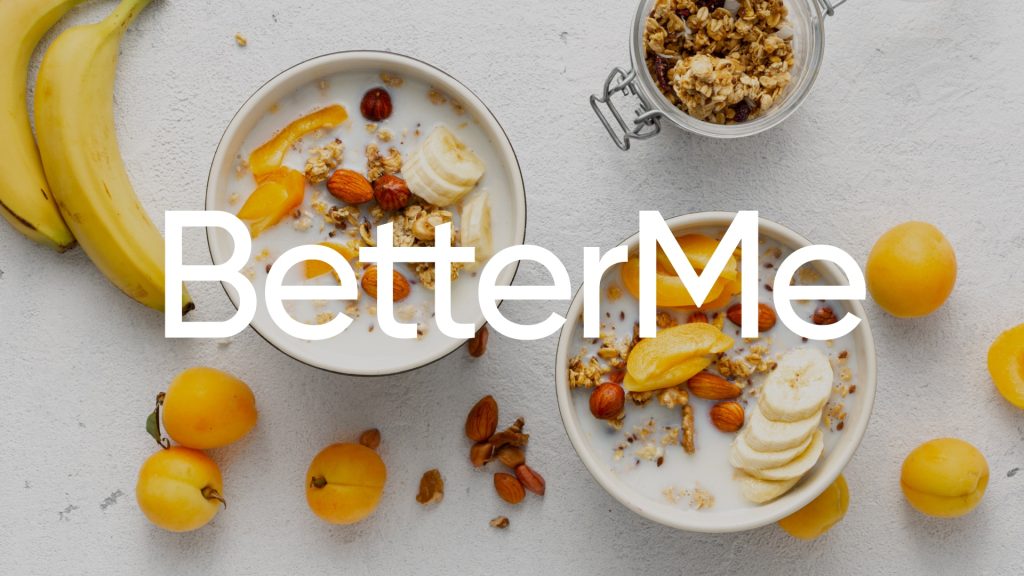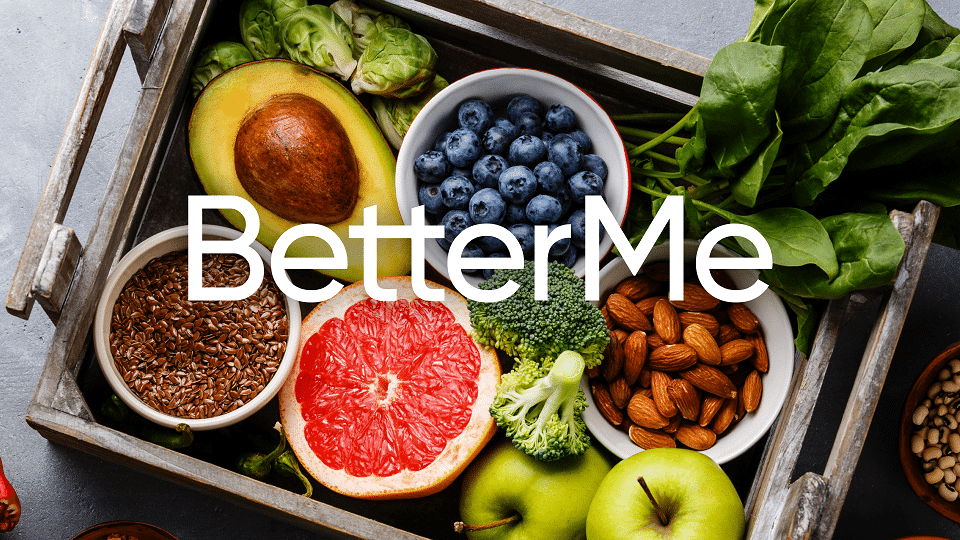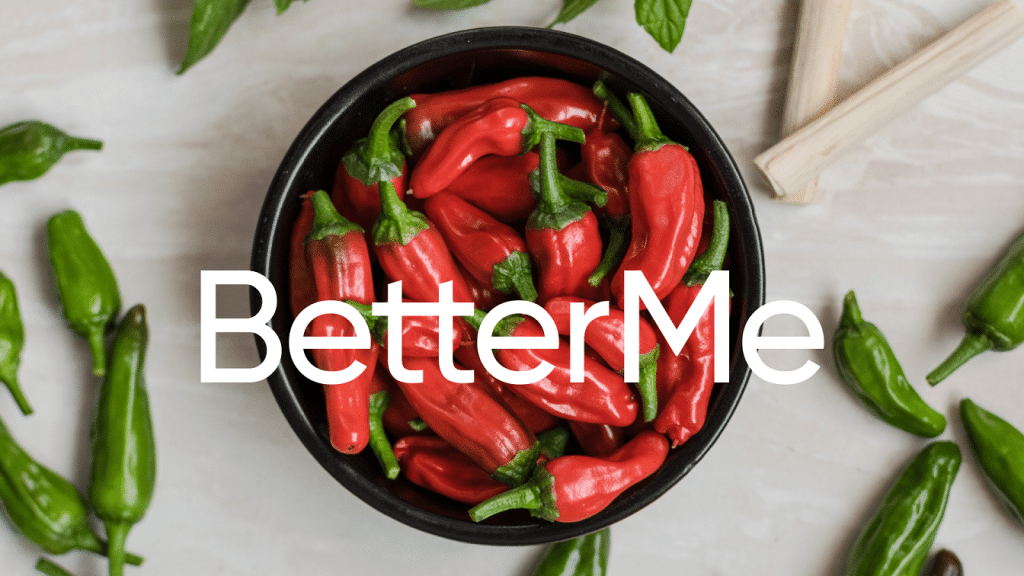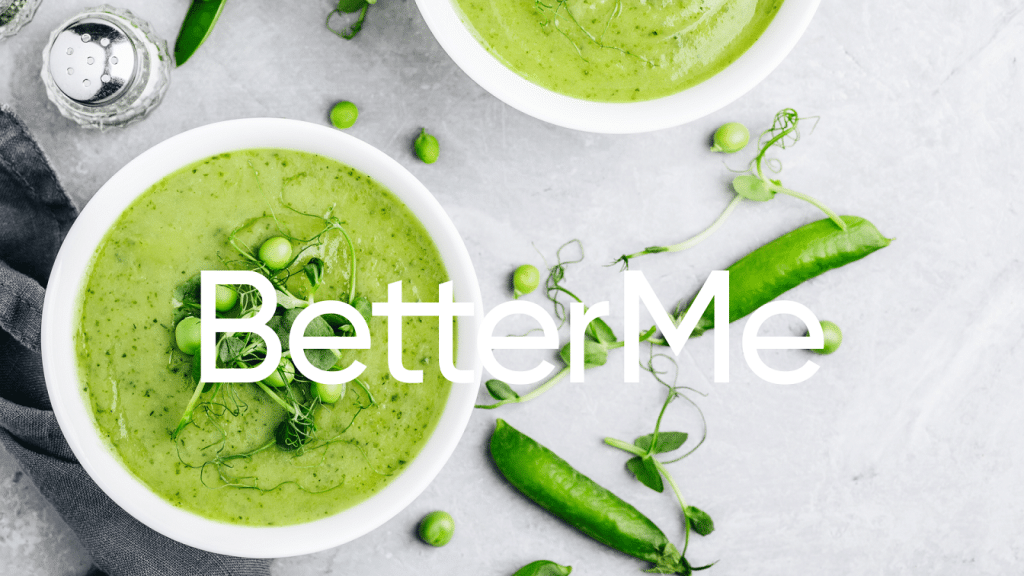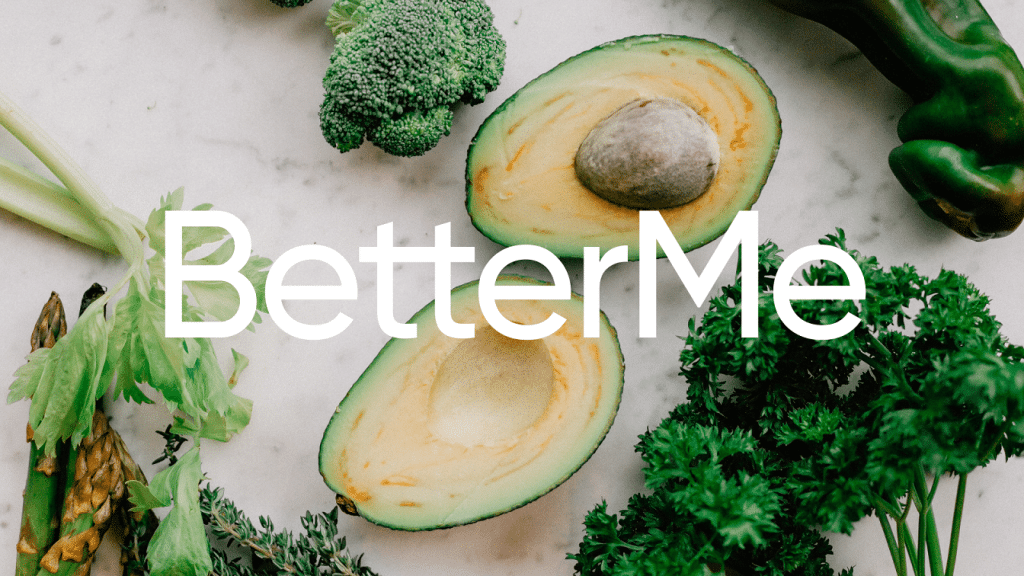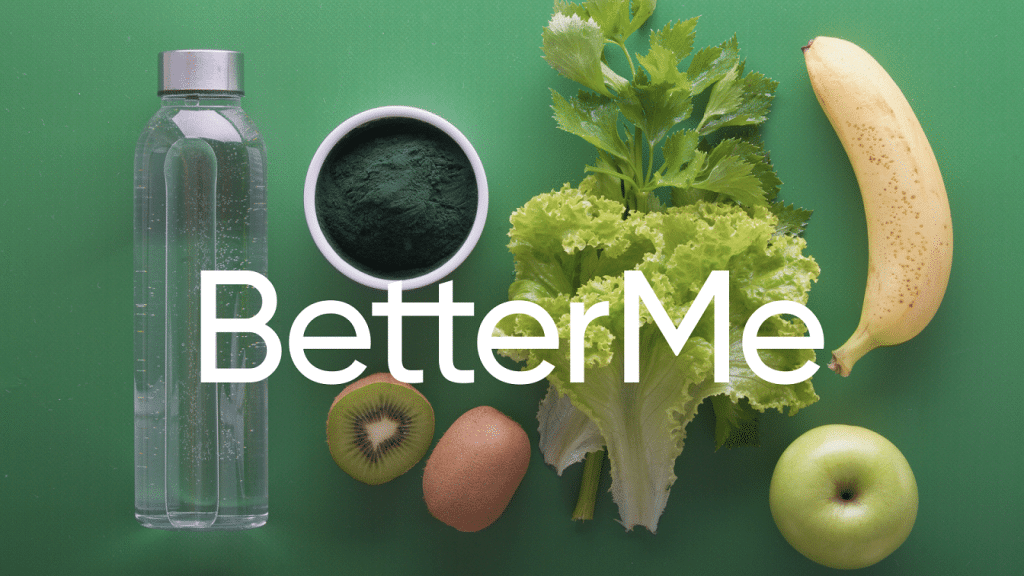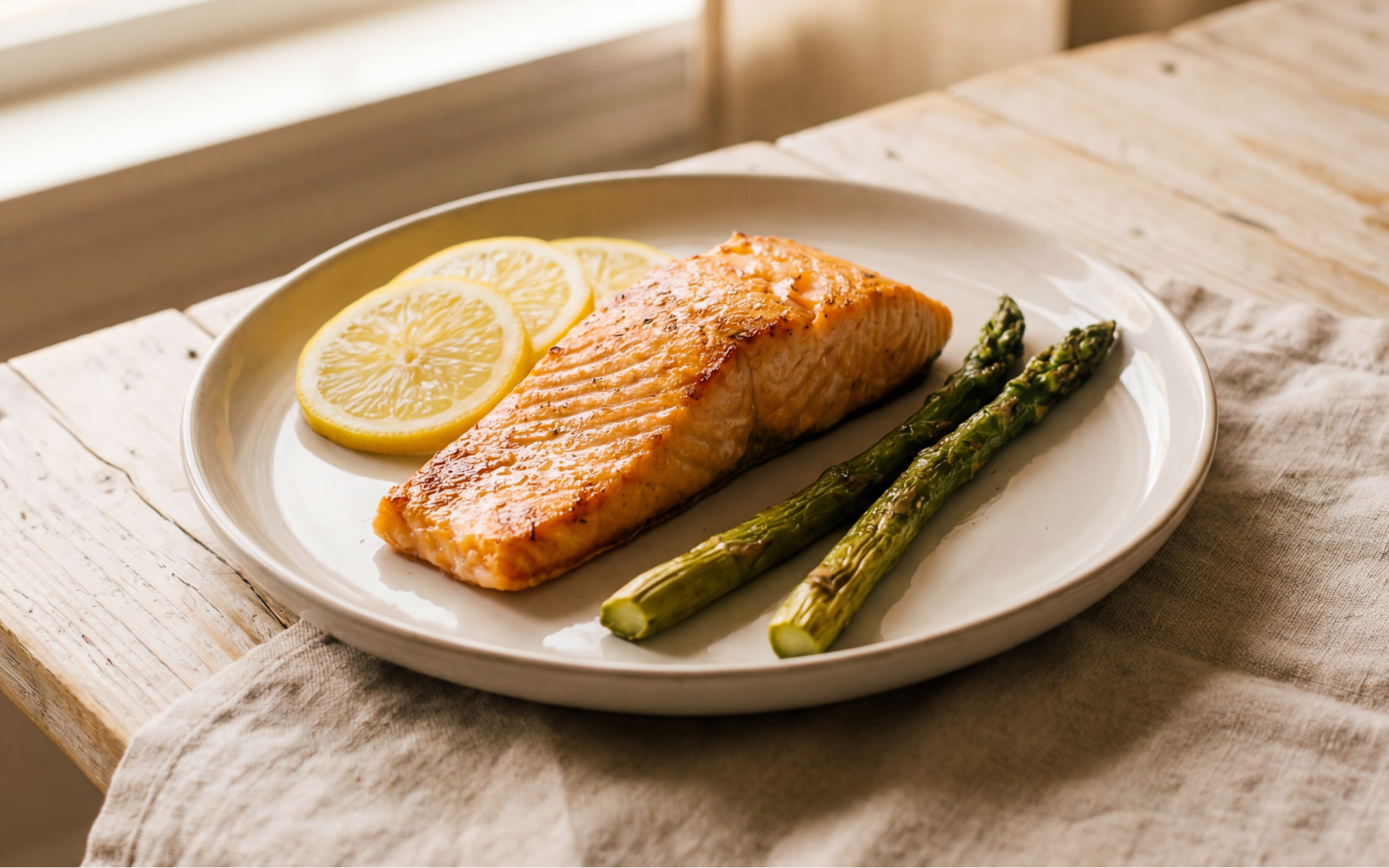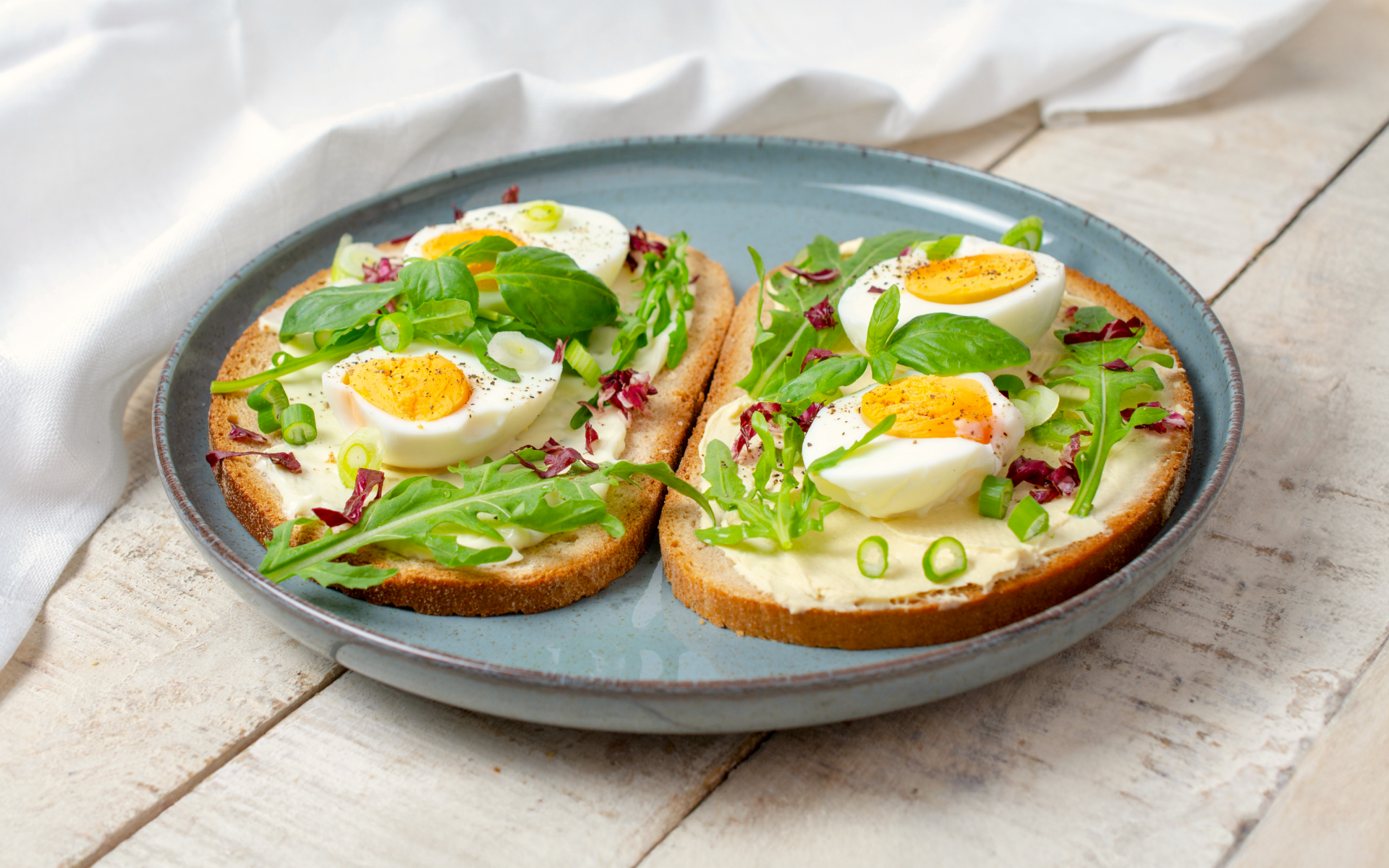The Pitta Diet
If you want to improve your metabolism, the solution may lie in the ancient Ayurveda pitta diet.
Get your personalized
meal plan!
The pitta diet features a range of wholesome and unprocessed food options, which are actually healthy for any diet plan. On top of that, Ayurveda provides a holistic approach to health, which further complements the pitta diet.
To appreciate the benefits of the pitta diet, you first need to understand the practice of Ayurveda.
What You Need To Know About Ayurveda And The Pitta Diet
Once you have a good understanding of Ayurveda, you’ll be able to appreciate the value of the Ayurvedic pitta diet.
What Is Ayurveda?
Ayurveda is a medical system that has been used for thousands of years in India (5, 13). Unlike modern medicine that focuses on your body, Ayurveda seeks to cleanse and restore balance within your body, mind, and spirit. To achieve this, it uses herbal medicines, diet, meditation, exercise, physical therapy, breathing, and several other methods.
But the Ayurvedic concept of health isn’t just limited to the individual.
In Ayurveda, health is a state of equilibrium with one self (svasthya), yet inextricably linked to your environment. That’s why, in classical Ayurveda text, the properties of food also include their relation to seasons and places.
According to Ayurveda, man is made up of the same components as the world, but in different degrees.
Although the Ayurvedic approach to nutrition differs from modern nutrition, contemporary approaches in systems biology and personalized medicine are actually starting to apply a similar holistic approach.
Read More: Yogic Diet: Keep Your Body Nourished And Your Mind Clear
How Ayurveda Classifies Food
In Ayurveda, food (ahara) is one of the three pillars of life, apart from a regulated sexual life and sleep (8).
Ayurveda classifies food based on multiple factors, including (1, 17):
- taste
- dose
- processing
- therapeutic qualities
- time
- prescriptions of consumption
- place
- nature of the food
- different incompatibilities of food
- food safety
- food qualities
- intake based on your digestive ability
BetterMe app will provide you with a host of fat-frying fitness routines that’ll scare the extra pounds away and turn your body into a masterpiece! Get your life moving in the right direction with BetterMe!
Ayurveda And The Pitta Diet
The pitta diet is a result of Ayurveda’s classification of different foods.
Pitta is one of the three major classifications in Ayurveda.
Here is a bit of background information on this classification of food.
Although Ayurveda has multiple ways of classifying food, the primary classification is based on five elements which make up all living and non-living beings on Earth (according to Ayurveda).
The five elements are (19):
- space corresponds to sound
- earth corresponds to smell
- fire corresponds to vision
- water corresponds to taste
- air corresponds to touch
This classification is further narrowed down to three humors/ tridoshas/ doshas.
The tridoshas are:
- vata (a combination of space and air)
- pitta (a combination of fire and a bit of water)
- kapha (a combination of water and earth)
According to Ayurveda, all living and non-living beings are made up of the five elements in different degrees. Each being has a predetermined ratio that ensures balance in the individual. Any changes would cause an imbalance.
What Is The Pitta Diet?
Now that you understand Ayurveda and pitta, you can better appreciate the pitta dosha diet.
Essentially, this is a diet that suits the pitta dosha.
The main function of pitta dosha is transformation. It could help control your hormones, metabolism and digestion (20).
Pitta dosha foods tend to be intense, hot, light, penetrating, sharp, acidic, and pungent.
This table provides a comprehensive list of foods to avoid or eat based on the pitta diet.
| Foods to Eat | |
|---|---|
| Grains | essene bread, basmati/ white/ wild rice, pasta, quinoa, pancakes, cooked oats, granola, wheat, crackers, amaranth, wheat meat seitan, spelt, wheat bran, tapioca, dry couscous, Durham flour, barley cereal, rice cakes, oat bran, sprouted wheat |
| Legumes | pinto beans, black beans, tempeh, mung dal, tofu, soy cheese, soy flour (in moderation), dried peas, black-eyed peas, split peas, garbanzo beans/ chickpeas, white beans, kidney beans, brown and red lima beans, soy milk, lentils, soy powder (in moderation), aduki beans, soy beans, mung beans, navy beans |
| Seeds | pumpkin, flax, unsalted and buttered popcorn, halva, sunflower, psyllium |
| Nuts | charole, soaked and peeled almonds, coconut |
| Vegetables | sweet and bitter vegetables including artichoke, cooked radishes, cauliflower, watercress (in moderation), pumpkin, parsnips, olives, wheat grass, cucumber, cabbage, spaghetti squash, anise fennel, zucchini, rutabaga, cooked carrots, non-spicy sprouts, kale, parsley, artichoke, leaves of sweet and white prickly pear, Brussels sprouts, squash, sweet potatoes, peppers, peas, cooked beets, okra, lettuce, celery, raw carrots (in moderation), cilantro, leafy greens, cooked leeks, bitter melon, broccoli, cooked onions, Jerusalem green beans, winter and summer taro root, asparagus, mushrooms, dandelion greens |
| Fruits | most sweet fruits including sweet apples, limes (in moderation), red and purple grapes, pomegranates, avocado, sweet plums, sweet pineapple (in moderation), papaya (in moderation), coconut, ripe mangoes, sweet cherries, sweet oranges, prunes, melons, figs, watermelon, sweet berries, applesauce, sweet apricots, dates, strawberries (in moderation), raisins, pears |
| Animal foods | rabbit, venison, white turkey, white chicken, albumen/ white only eggs, shrimp (in moderation), freshwater fish, buffalo |
| Dairy | unsalted butter, ice cream, soft/ not aged/ unsalted cheese, cottage cheese, goat’s milk, freshly made & diluted yogurt (in moderation), cow’s milk, soft/ unsalted goat’s cheese, ghee |
| Condiments | seaweed (in moderation), black pepper (in moderation), dulse (in moderation), coriander leaves, hijiki (in moderation), kombu (in moderation), chutney, salt (in moderation), sprouts, sweet mango, tamari (in moderation), lime (in moderation) |
| Spices | vanilla (in moderation), fresh basil, saffron, tarragon (in moderation), neem leaves (in moderation), turmeric, caraway (in moderation), cinnamon, black pepper (in moderation), coriander, dill, parsley (in moderation), cardamom (in moderation), peppermint, fennel, fresh ginger, mint, orange peel (in moderation), spearmint, wintergreen, cumin |
| Herbal teas | hops, chamomile, peppermint, kukicha, spearmint, hibiscus, lemon grass, dandelion, raspberry, bancha, strawberry, violet, fresh ginger, lemon balm, sarsaparilla, oat straw, borage, burdock, red clover, passion flower, barley, jasmine, wintergreen, marshmallow, licorice, blackberry, catnip, fennel, nettle, alfalfa, yarrow, comfrey, lavender, chicory |
| Beverages | carob, sweet berry juice, soy milk, pomegranate juice, cool dairy drinks, grape juice, peach nectar, aloe vera juice, black tea (in moderation), beer/ dry white wine (in moderation), sweet cherry juice, mango juice, vegetable bouillon, hot/ spiced/ milk chai (in moderation), apple juice, prune juice, almond milk, mixed vegetable juice, pear juice, miso broth (in moderation), apricot juice, grain "coffee", rice milk, orange juice (in moderation) |
| Oils | starting with the most suitable: sunflower (internal and external use), ghee (internal and external use), canola (internal and external use), olive (internal and external use), soy (internal and external use), flax seed (internal and external use), primrose (internal and external use), walnut (internal and external use), avocado (external use), coconut (external use) |
| Sweeteners | maple syrup, fruit juice concentrates, turbinado, fructose, dried/ fresh sugar cane juice, barley malt, rice syrup |
| Food supplements | vitamin B12, blue-green algae, vitamin K, magnesium, spirulina, brewer's yeast, calcium, vitamin D, zinc, vitamin A, aloe vera juice, vitamin B1, barley green |
| Foods to Avoid | |
|---|---|
| Grains | dry oats, yeast bread, rye, corn, brown rice (rare occasions), polenta (rare occasions), buckwheat, millet muesli (rare occasions) |
| Legumes | tur dal, miso, soy sausages, urad dal, soy sauce |
| Seeds | chia, tahini, sesame |
| Nuts | filberts, walnuts, black walnuts, hazelnuts, pistachios, macadamia nuts, brazil nuts, cashews, peanuts, pecans, pine nuts, almonds with skin |
| Vegetables | pungent vegetables including cooked spinach (rare occasions), beet greens, fresh corn (rare occasions), raw spinach, prickly pear, kohlrabi (rare occasions), raw leeks, horseradish, turnip greens, daikon radish, hot peppers, eggplant (rare occasions), garlic, burdock root, olives, raw radishes, mustard greens, turnips, tomatoes, raw green onions, green chilies, raw beets |
| Fruits | generally most sour fruit including cranberries, sour oranges, sour pineapple, green grapes, green mangoes, sour berries, peaches, tamarind, lemons, rhubarb, sour cherries, persimmons, sour apples, grapefruit, kiwi (rare occasions), bananas, sour apricots, sour plums |
| Animal foods | salmon, dark turkey, egg yolk, sardines, seafood, sea fish, lamb, dark chicken, pork, tuna, beef, duck |
| Dairy | sour cream, plain/ frozen/ fruity yogurt, buttermilk, hard cheese, salted butter |
| Condiments | chocolate, mango pickle, lime pickle, ketchup, vinegar, soy sauce, horseradish, scallions, kelp, lemon, mango pickle, chutney, gomasio, mayonnaise, pickles, excess salt, mustard, spicy mango, chili pepper |
| Spices | sage, fenugreek, thyme, hing asafoetida, mace, cayenne, marjoram, savory, pippali, garlic, salt, nutmeg, mustard seeds, poppy seeds, bay leaf, allspice, paprika, cloves, dry basil, star anise, oregano, almond extract, dry ginger, anise, ajwan, rosemary |
| Herbal teas | rosehip (rare occasions, pennyroyal, mormon tea, basil (rare occasions), juniper berry, fenugreek, eucalyptus, sage, clove, sassafras, dry ginger, ajwan, yerba mate, hawthorne, ginseng, red zinger |
| Beverages | chocolate milk, icy cold drinks, caffeinated beverages, iced tea, papaya juice, tomato juice, sour berry juice, sour cherry juice, apple cider, coffee, carbonated drinks, hard/ red and sweet wine, pineapple juice, grapefruit juice, lemonade, sour juices, cranberry juice, carrot juice |
| Oils | corn, almond, safflower, apricot, sesame |
| Sweeteners | jaggery, white sugar (rare occasions), molasses, honey (rare occasions) |
| Food supplements | iron, royal jelly (rare occasions), folic acid, bee pollen (rare occasions), vitamin B6, vitamin B2, bioflavonoids, vitamin C, amino acids, copper, vitamin E |
What You Need To Know About Pitta Diet For Weight Loss/Increased Metabolism
So, can you use the pitta diet for weight loss/ increased metabolism?
Yes, you can.
The main reason why is because the pitta diet focuses on healthy foods.
You can maintain a healthy weight and reduce the risk of various diseases simply by eating healthy foods. Such a healthy diet includes vegetables, whole grains, fruits, low-fat or fat-free dairy products, lean meats, fish, poultry, beans, nuts, and eggs. It also limits sodium, and sugars, as well as saturated and trans fats.
Most importantly, the diet avoids processed foods.
This is supported by a scientific study which revealed a 50% increase in post-meal calorie burn from eating whole foods compared to processed foods (14).
Although there’s limited research specifically on the Ayurvedic diet, a few studies are trying to prove its benefits.
One study evaluated the effect of an Ayurveda-based lifestyle. This included an Ayurveda diet, yoga, and stress management. Participants achieved a 13 pounds (5.9 kg) weight loss after nine months (2).
Read More: Detox Smoothies To Shed Belly Weight: Supercharging Your Weight Loss With Vitamin-Packed Beverages
Ayurvedic Pitta Diet And What Foods To Avoid For Increased Metabolism
The Ayurveda pitta diet is not only beneficial because of the foods it favors, but also because of the foods it avoids.
The diet particularly abstains from processed foods.
Eating ultra-processed foods has been linked to several health problems. That’s because such foods contain ingredients like emulsifiers, hydrogenated oils, flavoring agents, and high-fructose corn syrup. They are high in sugar, fat, salt and energy.
They also have a low nutrient and fiber content.
Due to the low fiber content, you’ll end up eating more without feeling full. That means you’ll consume even more empty calories.
One study found that adults who ate ultra-processed foods ended up consuming 500 more calories daily compared to those who ate minimally processed foods (12). Those who ate the ultra-processed diet also gained an average of 2 pounds (0.9 kg). On the other hand, those who ate the minimally processed diet lost the same amount of weight.
Ayurvedic Pitta Diet And What Foods To Eat For Increased Metabolism
Specific foods produce a higher diet-induced thermogenesis (a process that produces heat in your body). This contributes to your daily energy expenditure, apart from your basal metabolic rate (metabolic rate at rest) and energy cost during physical activity.
The pitta diet favors certain foods which have a high diet-induced thermogenesis.
Based on scientific studies, you can get higher diet-induced energy expenditure from a relatively high protein consumption with low fat consumption (10). That matches with the food recommendations in the pitta diet, which involves lower fat consumption and a range of protein food options.
What Is A Pitta Balanced Diet?
A pitta balanced diet is aimed at restoring or maintaining a balanced pitta dosha.
Why is that important?
Well, according to Ayurveda, a pitta imbalance is associated with less mindfulness, poorer mood, stress, and more anxiety (16). On the other hand, a balanced pitta enhances healthy digestion and gives you focused productivity.
So, how can you know whether you have a balanced pitta?
Here are some of the signs that can indicate a balanced pitta:
- being passionate
- healthy digestion (especially involving complex proteins in dairy or gluten)
- productivity
- healthy circulation
- an initiative to make healthy life choices
- decisiveness
In contrast, these are some of the signs that indicate an imbalanced pitta:
- hair thinning or premature graying
- being irritable or impatient
- indigestion or reflux
- being excessively demanding or critical of others
- ruddy skin that’s prone to acne or rashes
- perfectionist tendencies
- excessive stomach acid
- being frustrated, angry, or intense
- discomfort in hot weather
- loose bowel movements or diarrhea
- experiencing hot flashes
If you experience most of those symptoms, you may need to balance pitta.
That’s where a pitta balanced diet/ pitta-pacifying diet comes in. It balances pitta through such foods as:
- all sweeteners except honey and molasses
- dairy products like milk, ghee, and butter
- cinnamon, cardamom, fennel, coriander, and other condiments/ spices
- sweet fruits
- coconut, olive, and sunflower oils
- asparagus, potatoes, cucumbers, sweet potatoes, and other vegetables
Pitta Body Type Diet
Just as food is classified into three doshas, so also are humans.
This means that someone classified as pitta, requires a pitta body type diet.
In Ayurveda, your individual body type determines the effect of certain foods on your system (15). Your body type is based on a set of physiological, physical, and psychological attributes (9).
You can identify your body type based on your taste preferences (6):
- vata have an affinity for sour, sweet, and salty tastes
- pitta like astringent, sweet, and bitter tastes
- kapha prefer pungent, astringent, and bitter tastes
Consuming foods within your preferred tastes will ensure balance in your body. However, consuming foods that don’t match your preferred tastes may lead to imbalances in your body. In turn, this may lead to degeneration of your body and rapid aging.
Physiological Characteristics Of Pitta Body Type
Another way to identify your body type is through your physiological characteristics.
According to Ayurveda, pitta body types have more fire compared to other body types. This is reflected in such physiological characteristics as (4, 18):
- having great appetite
- strong and efficient digestion (makes them capable of eating many types of food)
- withstanding cold due to a warm body temperature
- incapable of tolerating too much salt, or sour and spicy food
- negatively affected by overeating
Physical Characteristics Of Pitta Body Type
Your physical characteristics can also reveal your pitta body type.
Two key attributes are:
- sleeping soundly for short durations
- abundant energy
Besides the positive attributes, imbalanced pittas may display the following negative physical characteristics:
- skin rashes
- indigestion
- burning sensations
- excessive body heat
- peptic ulcers
- heartburn
Emotional Characteristics Of Pitta Body Types
Your pitta body type applies to your emotional and personality attributes too.
Various key attributes include:
- sharp-witted/ powerful intellect
- good decision making
- a strong ability to concentrate
- preferred occupations like teachers, and speakers
- ambitious and practical
- precise, direct, and outspoken
- love adventure and challenges
When imbalanced, pittas will exhibit the following characteristics:
- emotional outbursts
- short-tempered
- argumentative
How Pittas Can Stay Balanced
Since Ayurveda takes a holistic approach to health, a proper diet alone isn’t enough for pittas to stay balanced (3). You need to change multiple aspects of your entire lifestyle to stay balanced.
Some useful guidelines include (7):
- keep cool mentally and physically
- be considerate and patient
- avoid excessive heat, humidity, or steam
- engage in quiet and contemplative activities
- drink plenty of fluids
- exercise during the cooler times of the day
- observe moderation in all things
- get plenty of fresh air
- avoid potential conflict
BetterMe will keep you laser-focused on your weight loss journey! Nutrient-packed meal plans, fat-blasting workouts, galvanizing challenges and much more. Try using the app and see for yourself!
Pitta vs. Vata Diet
You may be curious about the differences between the pitta diet and the vata diet.
A basic understanding of the differences can help you avoid mixing up your diet and eating the wrong foods. However, there are some similarities, which may be useful in reducing the complexity of planning meals for large groups of people.
What Diet Can Convert You From Vata To Pitta?
There are specific foods that pittas should avoid, but vatas should eat. There are also specific foods that pittas should eat, yet vatas should avoid (11).
You should take note of these to avoid turning your pitta diet into a vata diet.
Here’s a sample of foods that pittas should avoid and Vatas should eat:
- bananas
- daikon radish
- soy sauce
Similarly, here’s a sample of foods that pittas should eat but vatas should avoid:
- watermelon
- artichoke
- barley
What Diet To Eat When Equal Parts Vata And Pitta?
Certain foods can be eaten by both pittas and vatas.
When you eat such foods, you won’t need to worry whether you’re turning your pitta diet into a vata diet. Such foods include:
- avocado
- asparagus
- amaranth
In the same way, certain foods should be avoided by both pittas and vatas. These include:
- persimmons
- beet greens
- bread with yeast
Pitta Vs. Kapha Diet
The pitta diet also has various similarities with the kapha diet.
In fact, some of the foods may be eaten by all three doshas, besides the ones that are only similar between kapha and pitta.
In the same way, certain foods should be avoided by pittas, but eaten by kaphas.
What Diet Can Convert You From Kapha To Pitta?
You can convert your diet from pitta to kapha by eating foods prescribed for kapha yet not recommended for pitta.
A few of such foods that kaphas should eat and pittas should avoid include:
- cranberries
- beet greens
- buckwheat
On the other hand, some foods that pittas should eat but kaphas should avoid include:
- avocado
- cucumber
- pancakes
What Diet To Eat When Equal Parts Kapha And Pitta?
If you want to avoid mix-ups with your diet plans, you can choose to focus on the foods that apply to both kapha and pitta.
For instance, foods that both pittas and kaphas should eat include:
- applesauce
- artichoke
- amaranth
On the other end, foods that both pittas and kaphas should avoid include:
- bananas
- bread with yeast
- miso
Conclusion
Although the entire concept of Ayurveda and pitta diet may seem foreign and complex, it becomes easy to follow once you understand the foundational basis.
Above all, it fits in within the general concept of holistic living, which will inspire you to live a healthy and meaningful life.
DISCLAIMER:
This article is intended for general informational purposes only and does not address individual circumstances. It is not a substitute for professional advice or help and should not be relied on to make decisions of any kind. Any action you take upon the information presented in this article is strictly at your own risk and responsibility!
SOURCES:
- An Appraisal on Ayurvedic Diet and Dietary Intake Considerations in View of Nutrition Science (2018, researchgate.net)
- A Pilot Feasibility Study of Whole-Systems Ayurvedic Medicine and Yoga Therapy for Weight Loss (2014, ncbi.nlm.nih.gov)
- Ayurveda: a distinctive approach to health and disease (2010, jstor.org)
- Ayurveda & How To Eat For Your Dosha (n.d., goop.com)
- Ayurveda (n.d., cancer.gov)
- Ayurvĕdic approach to pathya (ideal diet planning)–an appraisal (2005, researchgate.net)
- Ayurvedic Concept of Food and Nutrition (2006, opencommons.uconn.edu)
- Charak Samhita-Complete Encyclopedia of Ayurvedic Science (2013, researchgate.net)
- Classification of Human Population Based on HLA Gene Polymorphism and the Concept of Prakriti in Ayurveda (2005, liebertpub.com)
- Diet induced thermogenesis (2004, ncbi.nlm.nih.gov)
- Diets based on Ayurvedic constitution–potential for weight management (2009, researchgate.net)
- Eating highly processed foods linked to weight gain (2019, nih.gov)
- Nutritional Theory in Ayurveda (2004, liebertpub.com)
- Postprandial energy expenditure in whole-food and processed-food meals: implications for daily energy expenditure (2010, ncbi.nlm.nih.gov)
- Prakriti and its associations with metabolism, chronic diseases, and genotypes: Possibilities of new born screening and a lifetime of personalized prevention (2014, pubmed.ncbi.nlm.nih.gov)
- Relationships among classifications of ayurvedic medicine diagnostics for imbalances and western measures of psychological states: An exploratory study (2019, sciencedirect.com)
- Traditional and ayurvedic foods of Indian origin (2015, sciencedirect.com)
- Traditional Medicine to Modern Pharmacogenomics: Ayurveda Prakriti Type and CYP2C19 Gene Polymorphism Associated with the Metabolic Variability (2011, hindawi.com)
- Understanding personality from Ayurvedic perspective for psychological assessment: A case (2011, ncbi.nlm.nih.gov)
- What Is the Ayurvedic Diet—and Can It Help You Lose Weight? (2019, health.com)
